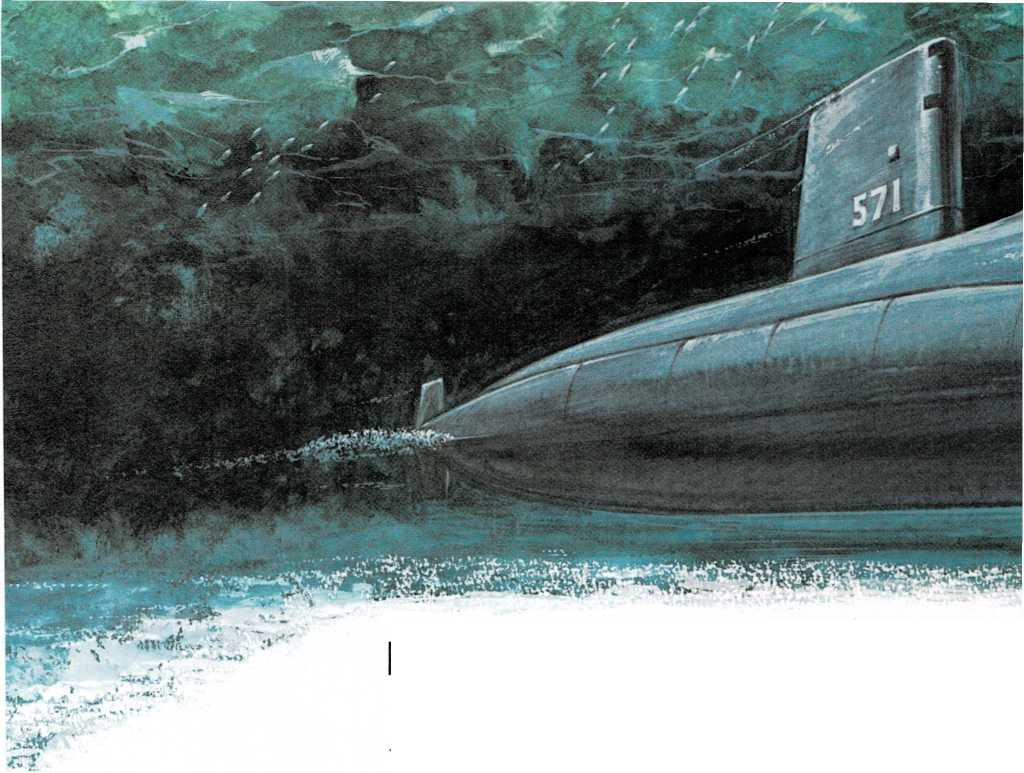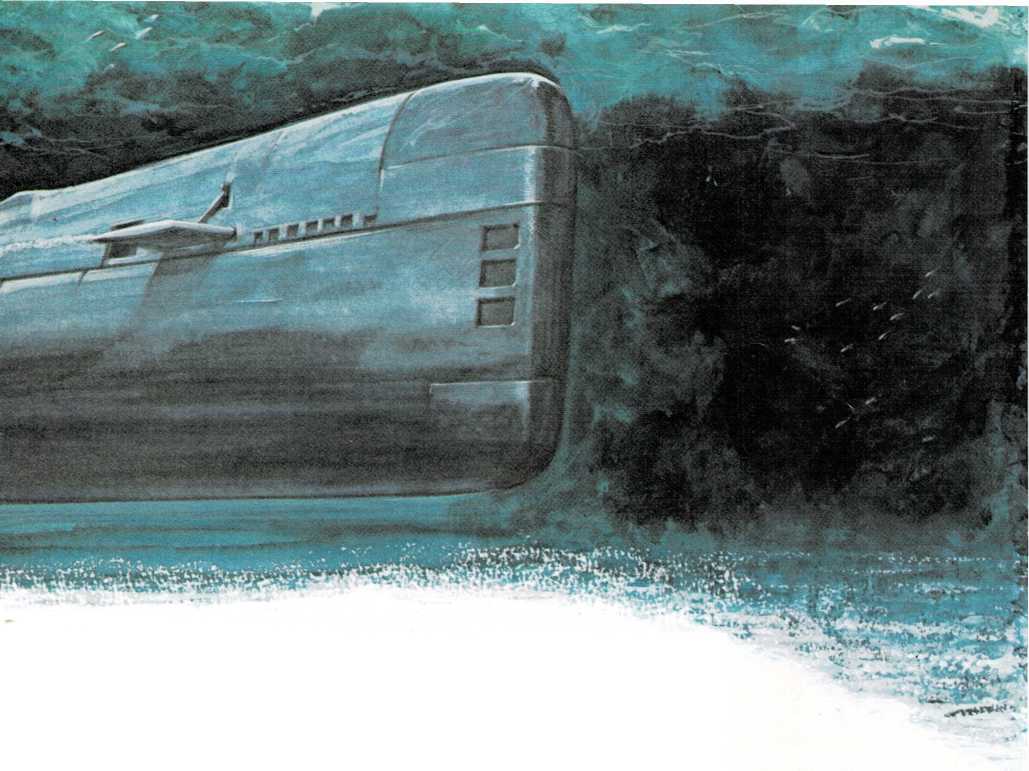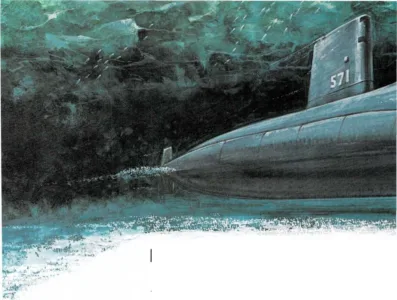
Beneath the pole
Above the endless sheet of white ice, a cold wind howled. Somewhere in
all that frozen whiteness was the spot that was the farthest
north of any place on earth—the North Pole.
Beneath the ice lay the dark, chill waters of the Arctic Ocean. A long,
slim, metal shape slid through the black water. It was a ship— the
United States Navy nuclear-powered submarine Nautilus
[(naw]{.smallcaps} tuh luhs).
The Nautilus had been moving beneath the ice for nearly three full
days. Now, the men of the crew waited eagerly for what was about to
happen. The ship was silent except for the steady ping . . . ping . . .
ping of the sonar. This sensitive instrument told the crew that the
polar ice above the ship was from eight to eighty feet (2.4 to 24
meters) thick. The needle on the depth gauge showed that the ship was
four hundred feet (122 m) below the surface.

Then the voice of the captain came over the ship’s loudspeakers.
\”Stand by! Ten . . . eight . . . six . . . four . . . three . . . two
. . . one.MARK! August 3,1958. Time, 2315 (11:15 [p.m.).]{.smallcaps}
For the United States and the United States
Navy—the North Pole!”
There were cheers. For, at that moment, the Nautilus became the first
ship to ever sail beneath the ice at the North Pole. The Nautilus had
traveled from the Pacific Ocean to the Atlantic Ocean, across the top of
the world.
Then, two years later, in 1960, another United States nuclear-powered
submarine, the Triton, sailed around the world underwater. The voyage
of the Triton covered 41,500 miles (66,790 kilometers) and lasted a
total of eighty-four days.
The voyages of the Nautilus and the Triton were more than historic
firsts. They proved the importance of submarines as a way to reach new
places and learn new things.

